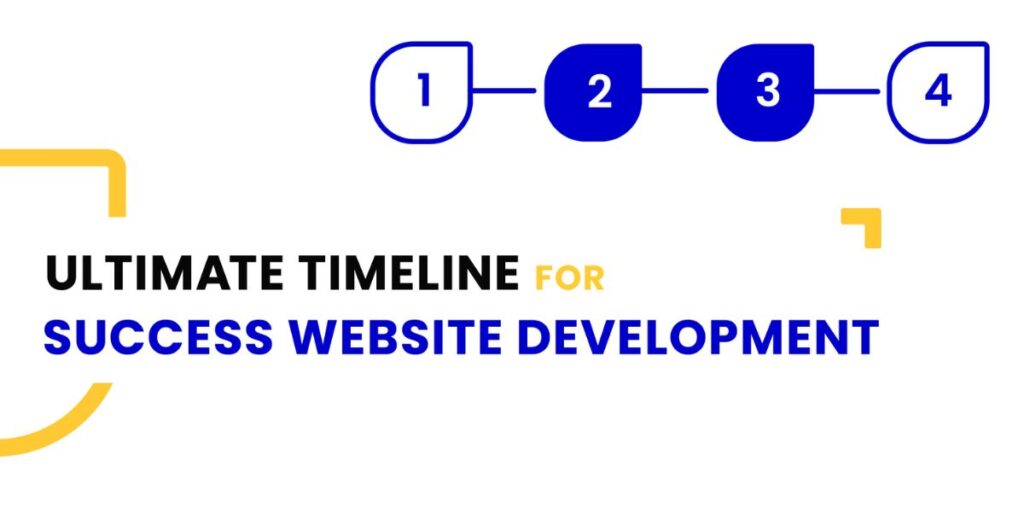In today’s digital age, a business’s online presence is paramount to its success. A well-designed website not only serves as a virtual storefront but also acts as a crucial touchpoint for customers. However, the journey from conceptualization to launch can often be a time-consuming process, fraught with delays and obstacles. Understanding the website development timeline and implementing strategies to expedite it is essential for staying competitive in the fast-paced digital landscape.
Before delving into strategies to shorten the website development timeline, it’s crucial to understand the typical stages involved in the process:
1) Planning and Research
During the planning and research phase, project objectives are defined, market research is conducted, and the website’s architecture and features are outlined. This crucial step lays the foundation for the entire development process, ensuring alignment with business goals and user needs. Thorough research and careful planning in this stage help minimize delays and prevent scope creep later on. By investing time and resources upfront, businesses can streamline the development timeline and achieve a successful outcome.
2) Design
During the design phase, designers craft wireframes and mockups to visualize the website’s layout, user interface, and branding elements. This step is crucial for ensuring a cohesive and visually appealing website that aligns with the project objectives and user expectations. By creating detailed prototypes, designers can gather feedback early in the process and iterate on the design before proceeding to development, ultimately saving time and minimizing the need for revisions later on.
3) Development
In the development phase, skilled developers breathe life into the design using programming languages like HTML, CSS, and JavaScript. They seamlessly integrate essential functionalities like forms, databases, and e-commerce features to ensure a dynamic and user-friendly website experience. This crucial stage requires meticulous attention to detail and expertise to bring the project to fruition effectively.
4) Testing
Testing is a critical phase where quality assurance specialists rigorously assess the website’s functionality, compatibility, and usability across diverse devices and browsers. They ensure seamless performance, identify and rectify any issues, and guarantee a smooth user experience. This meticulous process is essential for delivering a high-quality website that meets the expectations of users and stakeholders.
5) Launch and Maintenance
After rigorous testing, the website is launched to the public. Continuous maintenance and updates are critical for optimal performance and security. Regular monitoring and timely fixes keep the site running smoothly, safeguarding against vulnerabilities and ensuring a positive user experience. This ongoing effort is integral to sustaining the website’s effectiveness and relevance in the ever-evolving digital landscape.
While this framework provides a general overview, the actual timeline can vary significantly depending on the complexity of the project, the team’s efficiency, and external factors such as client feedback and revisions.
5 Expert Tips to Shorten the Website Development Timeline
1) Set Clear Objectives and Scope
The importance of thorough planning cannot be overstated. Before embarking on the development process, clearly define project objectives, target audience, and desired features. A detailed project scope document will serve as a roadmap, helping to prevent scope creep and unnecessary delays. By setting clear expectations from the outset, you can streamline the development process and minimize the need for extensive revisions later on.
2) Embrace Agile Methodology
Agile methodology, characterized by iterative development and frequent collaboration between cross-functional teams, has revolutionized the software development industry. By breaking the project into smaller, manageable sprints, teams can deliver incremental updates and gather feedback from stakeholders along the way. This approach fosters adaptability and allows for quick course corrections, ultimately accelerating the development timeline.
3) Prioritize Essential Features
In the age of feature-rich websites, it can be tempting to incorporate a multitude of bells and whistles. However, attempting to implement every conceivable feature can lead to bloated code and unnecessary delays. Instead, focus on identifying and prioritizing essential features that align with the project objectives and user needs. By adopting a minimalist approach and deferring non-essential features to future iterations, you can expedite the development process without sacrificing quality.
4) Utilize Frameworks and Libraries
Leveraging pre-existing frameworks and libraries can significantly expedite the development process. Frameworks such as Bootstrap and Foundation provide a robust foundation for building responsive, mobile-friendly websites, while libraries like jQuery offer a plethora of pre-built components and plugins. By capitalizing on these tools, developers can streamline common tasks, reduce coding time, and ensure compatibility across different browsers and devices.
5) Streamline Communication and Collaboration
Effective communication is the cornerstone of successful project management. Establishing clear channels of communication and fostering collaboration between team members, clients, and stakeholders is essential for keeping the development process on track. Utilize project management tools such as Slack, Trello, or Asana to facilitate real-time communication, track progress, and manage tasks efficiently. Regular meetings, stand-ups, and status updates can help identify potential bottlenecks and address issues proactively, ensuring a smooth and expedited development timeline.
Conclusion
In conclusion, the website development timeline is a multifaceted process that requires careful planning, collaboration, and execution. By understanding the various stages involved and implementing strategies to expedite the process, businesses can accelerate time-to-market and gain a competitive edge in the digital landscape. From setting clear objectives and embracing agile methodology to prioritizing essential features and leveraging existing tools and frameworks, there are numerous ways to streamline the development timeline without compromising quality. By adopting a proactive mindset and continuously seeking ways to optimize efficiency, businesses can navigate the complexities of website development with confidence and achieve their online objectives effectively.


